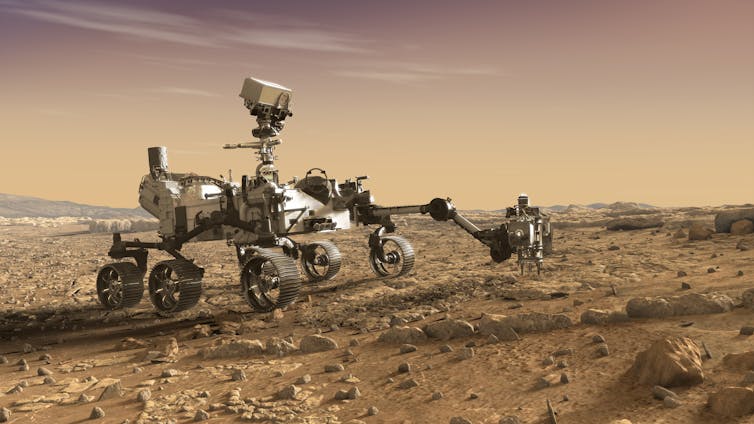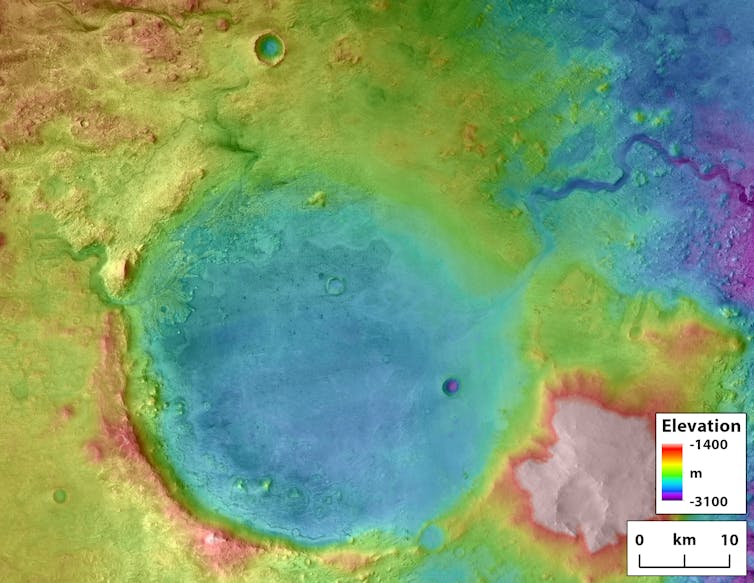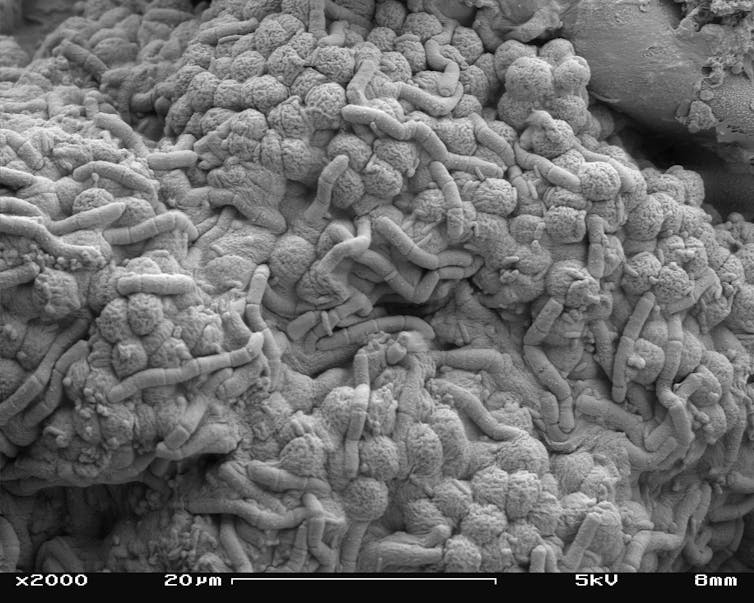
NASA
It will be one of the most daunting, complicated and, potentially, scientifically rewarding missions ever undertaken to the red planet. Ministers at a recent meeting of the European Space Agency (ESA) have fully committed to plans to collect samples from the surface of Mars and return them to Earth, in a joint effort with NASA. Official approval for the NASA budget to cover this mission is anticipated early next year.
The as yet unnamed mission will be accomplished with a series of launches, beginning in July 2020, with the Mars 2020 rover, which was already going ahead. This is a nuclear powered robotic rover which will make a precise touchdown in the Jezero crater in February, 2021.
In the three years between 1969 and 1972, six Apollo missions managed to bring back 380 kilograms of lunar samples. Retrieving any samples from the Martian surface, however, is significantly more difficult due to the vast distances involved.
For this reason, the project comprises three separate spacecraft. The first part of the mission is the deployment of the Mars 2020 rover. Even this will be daunting – it is notoriously difficult to land anything on Mars. Aside from conducting a number of scientific investigations of its own, the rover will gather up to 38 individual samples of Martian soil which it will store in sealed containers. The samples will need to be kept safe until at least 2026.
The second part of the mission will be to get the samples back into orbit. At this time, a Mars Sample Retrieval Lander mission will be launched, again by NASA, which will deploy a lander and a European built “fetch rover” as near as possible to the landing site of the Mars 2020 rover – yet another tricky landing.
The fetch rover will meet the Mars 2020 rover on the surface, collect the samples, and return them back to the lander. Once aboard the lander, the samples will be transferred to a capsule on the Mars Ascent Vehicle, a rocket with as low a mass as possible which can still reach Martian orbit from the surface. Once in orbit, this capsule will be left to float uncontrolled.
The third part of the mission will be an Earth return vehicle launched by ESA. It will enter Martian orbit, then rendezvous and dock with the sample capsule, collecting the orbiting sample capsule and depositing it inside a protective heat and radiation shield. It will then fire up its engines once more and head back to Earth. On reaching Earth, the sample capsule will be released into the atmosphere and, with no parachute assistance, make a crash landing into the desert of Utah, sometime in 2031. If all goes to plan, of course.
This immensely complicated campaign will involve a number of groundbreaking firsts, including the first ever rocket launch from another planet, the first return of samples from Mars, the first rendezvous and docking in orbit around another planet, and the first rendezvous of two different spacecraft on the surface of another planet.
Jezero Crater
The purpose of the project is to retrieve samples from one of the most geologically interesting areas of the Martian surface: Jezero Crater.

NASA/Tim Goudge.
Jezero is a 45km diameter impact crater which lies in the northern hemisphere, at the western fringes of Isidis Planitia – a large flat plain which is itself also an impact feature. Research shows that Jezero appears to have once been a lake, with water entering the crater through channels, before outflowing towards Isidis to the east.
The Mars 2020 landing site is the fan shaped deposit at the opening of the western inflow channel – a feature believed to have been formed by a river delta spreading out over the surface of the crater. This area possesses high concentrations of smectite, a type of clay which often forms at the bottom of lakes and has long been thought to play a vital role in the origin of life on Earth.
Smectite clays are also very good at preserving fossils and other organic material. Microbial life has been theorised to be possible on Mars, as observations have shown it has a seasonal methane and oxygen cycle.
Methane is a key indicator of microbial life and so this cycle suggests that there’s either life under the soil of Mars, or methane is being stored in clathrates (a type of material that traps molecules) and released when heated during Martian summer. If Jezero crater ever had any microbial life, there is a good chance that fossilised remains would be present in the soil, awaiting discovery.
Terrestrial analysis
We already have some knowledge of the Martian surface environment acquired from robotic spacecraft, but such analysis is limited by the hardware we can send there. By bringing a sample back to Earth we can make far more precise measurements that, crucially, are repeatable. Terrestrial laboratories are future proof – as new technologies are developed, samples can be re-analysed with greater precision.
In fact, lunar samples retrieved during the Apollo missions are still yielding results today, some 50 years after they were collected.
Miniaturised instruments mounted on robotic spacecraft, such as microscopes and spectrometers, are capable, but their sensitivity simply does not match the equivalent instruments on Earth – mainly due to limitations of mass, size, and power requirements on a spacecraft.
On Earth, it will be possible to image Martian samples at scales fine enough to see atomic structure and detect constituents at much smaller concentrations than would be possible on the red planet. Martian samples brought to Earth can also be dated accurately, potentially allowing scientists to answer the question of how long ago water sat in Jezero. Any microbial fossils in the soil would also be visible with these techniques.
Moreover, a better understanding of the material properties of Martian soil will inform engineers about its potential for use as a future building material. Such knowledge could be vital in planning future human exploration to Mars.

wikipedia, CC BY-SA
The complexity of this project gives an idea of how difficult it will be to send people to Mars and get them back again. If we succeed in this sample return mission, we are definitely one step closer to being able to send a manned mission to the red planet, with the returned samples revealing the most interesting locations for us to visit in person.
Gareth Dorrian, Post Doctoral Research Fellow in Space Science, University of Birmingham and Ian Whittaker, Lecturer in Physics, Nottingham Trent University
This article is republished from The Conversation under a Creative Commons license. Read the original article.